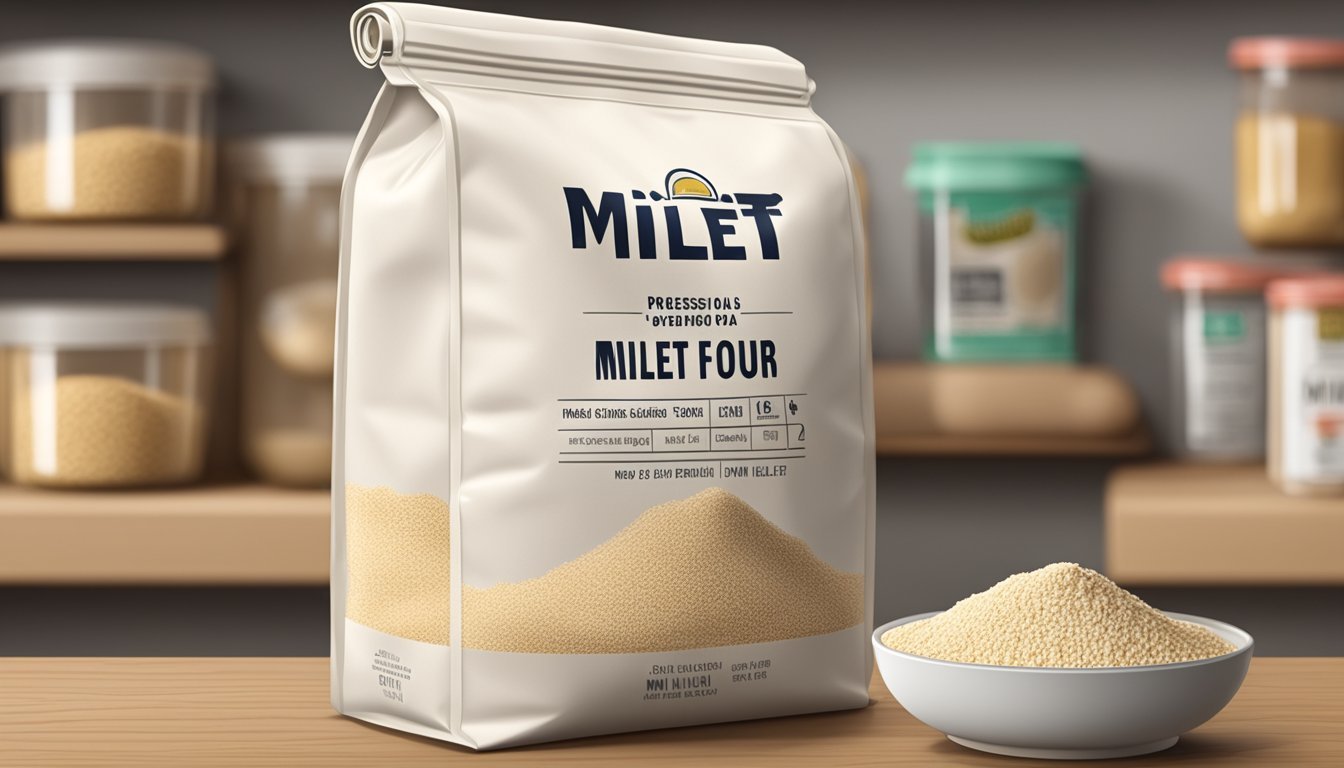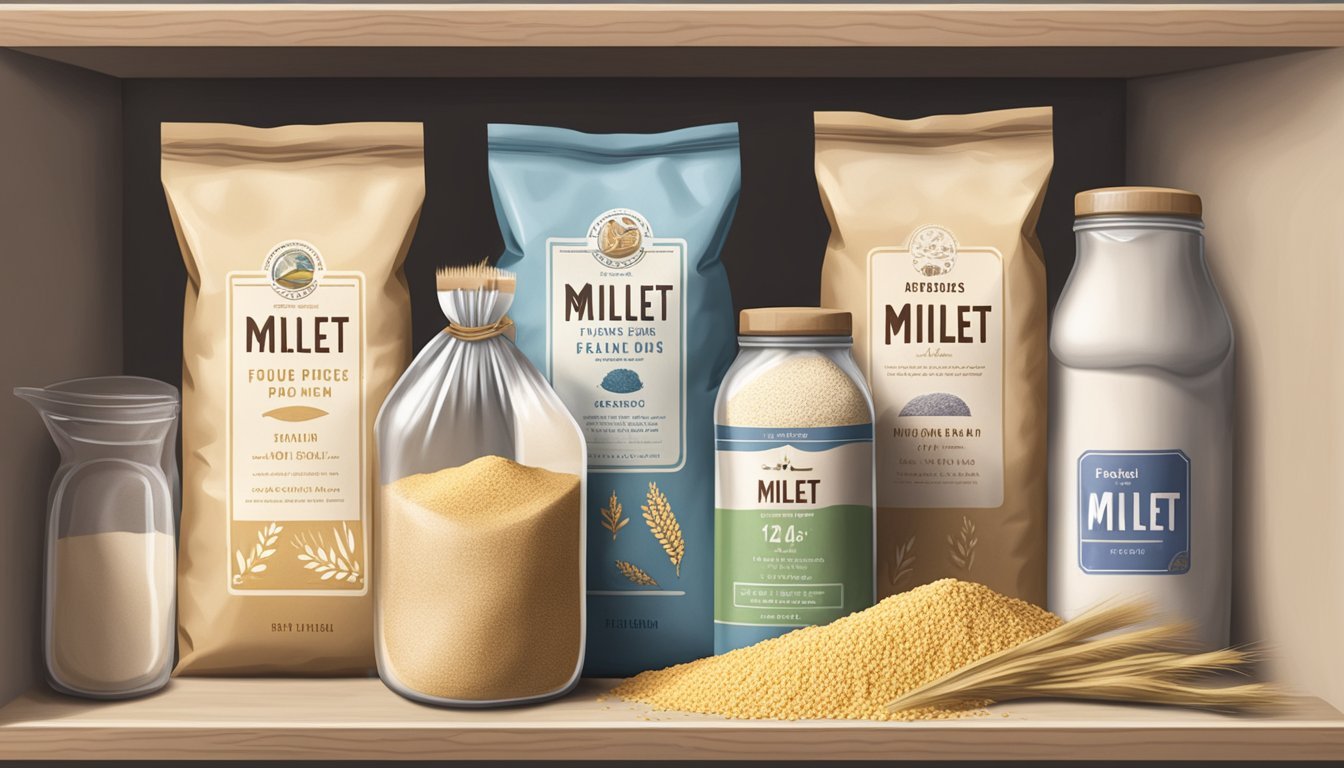How Long Does Millet Flour Last?
Shelf Life and Storage Tips
Millet flour, derived from the mildly nutty-flavored ancient grain, millet, is a versatile ingredient in baking and cooking, especially for gluten-free diets. Understanding its shelf life is critical to maintaining the quality and flavor of the flour, allowing bakers and cooks to use it at its peak. Proper storage is integral to extending millet flour's usability, as it is prone to spoilage due to its natural oils and nutrients.
The longevity of millet flour is greatly influenced by storage conditions. At room temperature, it generally maintains its quality for about one month. However, when stored in the refrigerator, its shelf life can be extended up to six months. For even longer preservation, freezing millet flour is an option, potentially lasting two months or more. Utilizing airtight containers or resealable bags can further prevent moisture and odors from compromising the flour's integrity.
Storage tips for millet flour emphasize the importance of cool, dry, and dark locations to prevent the degradation of the flour's natural components. These precautions not only contribute to maintaining the flour's freshness but also its nutritional quality, which includes the health benefits associated with whole grains. Thus, millet flour can be a durable staple in the pantry when stored under recommended conditions, ensuring its readiness for various recipes.
Properties of Millet Flour
Millet flour is known for its nutritional value and versatile baking properties. Its application is particularly important for those adhering to a gluten-free diet.
Nutritional Value
Millet flour is a nutritious choice, offering a significant amount of proteins, fibers, and various vitamins. It is especially high in B vitamins and minerals such as iron, magnesium, manganese, phosphorus, copper, zinc, and potassium. The flour is derived from small-seeded whole grains that are considered ancient grains, respected for their nutritional benefits.
Characteristics and Texture
The flour made from millet has a light, mild flavor, which lends itself to a variety of baked goods. The texture of millet flour is finely ground and it can produce baked items that are fluffy and soft. Its lightness makes it a suitable alternative to heavy, dense flours.
Types and Varieties
There are multiple types of millet including pearl, foxtail, and finger millet, (how long does finger millet last?) each contributing to different varieties of millet flour available on the market. Millet flour can be found as a whole-grain flour, which includes all parts of the grain, or as a refined product, similar to the distinction between whole-wheat flour and white flour. It's often mixed with other gluten-free flours like almond, buckwheat, or arrowroot to enhance its baking qualities.
Gluten-Free Aspect
Millet flour is naturally gluten-free, making it an excellent alternative to wheat and other gluten-containing flours. This quality is essential for those with celiac disease or a gluten intolerance. It allows for a diverse diet without the gluten found in all-purpose, self-rising, and white flours.
Storage Fundamentals
The longevity of millet flour significantly depends on storage conditions that prevent degradation. Proper storage can help maintain the flour’s quality and extend its shelf life.
Ideal Storage Conditions
Millet flour best retains its quality when stored at a cool, stable temperature away from fluctuating heat. The optimal temperature for storage is ideally at or slightly below room temperature (about 68°F or 20°C). Storing millet flour in a fridge can extend its life, while placing it in the freezer might prolong it even further for up to two months.
Impact of Heat and Light
Heat and light are the enemies of millet flour’s shelf life. Heat can speed up the process of rancidity while light can induce oxidation. Both these processes degrade the flour, so it is crucial to store millet flour in a pantry or cupboard that is shielded from direct sunlight and away from heat sources.
Airtight Storage and Moisture Control
Humidity is another factor that affects millet flour, as moisture leads to spoilage. An airtight container or plastic bag is imperative to safeguard the flour from moisture. For additional protection, consider using oxygen absorbers to maintain an oxygen-depleted environment. This not only controls moisture but also inhibits the growth of pests and molds.
Shelf Life Determination
Determining the shelf life of millet flour is critical for maintaining its quality and safety. Factors such as flour type, storage conditions, and signs of spoilage influence how long it can be safely consumed.
Shelf Life by Flour Type
Millet flour, made from the small-seeded grass of the same name, varies in shelf life depending on its processing and packaging. Unlike all-purpose wheat flour which is refined to contain only the endosperm, millet flour typically includes the bran and germ, resulting in a shelf life that is generally shorter. Stored properly in a cool, dry place, millet flour can last:
Unopened: up to 6 months
Opened: 1-3 months
Refrigerated: 6-12 months
Frozen: 12-18 months
Signs of Spoilage
Millet flour can exhibit signs of spoilage that are critical indicators of its quality. Consumers should look for:
Smell: A rancid or sour odor indicates the presence of spoilage.
Taste: A bitter taste is a hallmark of oxidation and rancidity.
Discoloration: Any unusual darkening may signify mold or spoilage.
Texture: Flour should be powdery and loose; clumps might indicate moisture ingress.
Expiration Date and Food Safety
An expiration date provides a guideline for food safety, but it is not the sole indicator. Millet flour past its expiration date may still be safe if it shows no signs of spoilage. However, rancidity and mold are not only concerning for flavor and texture but also for health, as mold may produce harmful mycotoxins. It's imperative to assess millet flour beyond the expiration date for spoilage before use.
Freezing and Refrigeration Techniques
Storing millet flour properly through freezing or refrigeration extends its shelf life and maintains quality. Both methods require appropriate packaging to ensure the flour remains dry and free from freezer burn or moisture buildup.
Benefits of Freezing Millet Flour
Freezing millet flour is an effective method to preserve its freshness for longer periods. It halts the oxidation process, keeping the flour's nutritional properties intact. Freezing can extend the shelf life of millet flour up to four months, compared to one month at room temperature.
Refrigeration vs. Freezing
While refrigeration offers a cooler environment than room temperature, it is generally less effective than freezing for long-term storage. In a fridge, millet flour typically maintains optimal quality for a shorter duration than in a freezer. Nonetheless, refrigeration is preferable when freezer space is limited, as it still provides a cooler, stable environment to slow the flour's aging process.
Packaging for Cold Storage
For both refrigeration and freezing, millet flour should be stored in airtight containers or freezer-safe bags to prevent moisture absorption and insect contamination. Here are the suggested packaging steps:
Transfer flour into an airtight container or freezer-safe bag.
Expel excess air from bags before sealing.
If using containers, ensure the seal is secure.
Label packages with the current date to monitor shelf life.
By employing these cold storage techniques, individuals can extend the usability of millet flour, retaining its flavor and nutritional quality for future use.
Millet Flour in Cooking and Baking
Millet flour, a gluten-free ingredient, is a versatile choice for cooking and baking, offering a nutritional boost to various dishes from bread to pastry.
Baking with Millet Flour
When using millet flour for baking, it's important to recognize that it does not behave like wheat flour because it lacks gluten. Thus, for baked goods like bread to rise, one must add a leavening agent such as baking powder. The flour is well-suited for gluten-free recipes, contributing to a tender crumb in cakes and biscuits.
Bread: Use a binding agent (e.g., xanthan gum (how long does xanthan gum last?) to mimic gluten's properties.
Pastry: Mix with other flours for improved texture.
Versatility in Recipes
The versatility of millet flour shines in its application across a spectrum of recipes. It can be the base for a hearty porridge or a delicate breakfast cereal. The flour's mild flavor makes it suitable for both sweet and savory dishes, allowing it to complement other ingredients without overpowering.
Sweet: Ideal for cakes, cookies, and pancakes.
Savory: Enhances the flavor of bread rolls and pizza bases.
Combining with Other Ingredients
Millet flour pairs well with various ingredients to enrich nutritional benefits and flavors. Since it is gluten-free, recipes often call for binding agents like eggs to improve texture. One can also add cooked millet, nuts, and seeds to recipes for added crunch and nutrition.
Binding agents: Eggs, flax seeds, or chia seeds provide stability.
Flavor enhancers: Nuts and seeds offer a textural contrast and boost of protein.
Preventing Waste and Preserving Quality
To prevent waste and preserve the quality of millet flour, specific storage techniques and practices can be implemented. These strategies are foundational for maintaining millet flour's usability up to its maximum shelf life.
Proper Storage Techniques
For optimal preservation, millet flour should be stored in an airtight container to protect it from moisture and pests. Such containers include ziplock bags, glass jars, or plastic containers with a secure seal. Keeping millet flour in a cool, dark place such as a pantry or cupboard extends its freshness by minimizing exposure to heat and light.
Managing Excess Flour
When faced with excess millet flour, consider dividing it into portions. Storing smaller quantities not only makes usage more manageable but also reduces the flour's exposure to air each time a portion is used. If the shelf life needs to be extended, freezing millet flour in an airtight container is an effective solution. Ensure to label each container with the date of storage to actively manage and use the flour before it surpasses its expiration date.
Extending Flour Longevity
The shelf life of millet flour at room temperature is typically around one month, but proper freezing can extend this period up to two months. To further prevent spoilage, ensure the flour is in a temperature-stable environment and away from any direct sources of heat. Conduct regular checks for signs of spoilage such as off odors, discoloration, or clumping, as these can indicate that the flour is no longer suitable for consumption.







